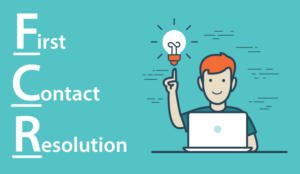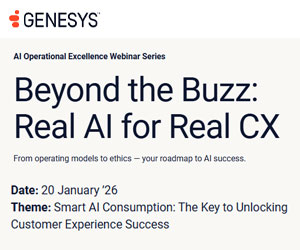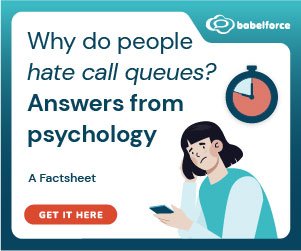Upland Software explores how knowledge management can be a game-changer for improving FCR and driving overall contact centre success.
What is First Contact Resolution?
First Contact Resolution (FCR) is a key metric for customer support as it measures the percentage of customer inquiries resolved on the first contact with a support agent.
In order to succeed in today’s customer-centric world, it’s critical to pay close attention to your FCR score as it directly impacts customer satisfaction and operational efficiency.
A high FCR rate signifies a well-oiled customer service operation, leading to increased customer loyalty, reduced costs, and improved agent productivity.
While there are many factors that come into play for achieving a high first contact resolution rate, investing in knowledge management is a critical component to success.
By harnessing the power of knowledge management, contact centres can equip agents with the information they need to resolve customer issues quickly and accurately on the first interaction.
Why First Contact Resolution Rates Matter
Research consistently demonstrates a strong correlation between FCR and customer satisfaction. Customers value quick and efficient resolutions to their problems.
A high FCR rate indicates a company can address customer needs promptly, which directly contributes to positive customer experiences.
Beyond customer satisfaction, FCR also impacts customer loyalty and retention. Customers who have their issues resolved swiftly are more likely to remain loyal to the brand.
Additionally, a high FCR rate can lead to increased customer referrals as satisfied customers are more inclined to recommend the company to others.
Overall, FCR serves as a leading indicator of customer experience and overall business health. By prioritizing FCR, companies can enhance customer satisfaction, foster loyalty, and ultimately drive business growth.
Challenges of Low First Contact Resolution Rates
While we’ve talked about the benefits of a high FCR rate, the truth is, many contact centres struggle with low first contact resolution rates. There are several factors that contribute to a low first contact resolution rates, including:
- Agent Knowledge Gaps: A lack of product knowledge, system understanding, or process familiarity can hinder an agent’s ability to resolve customer issues efficiently.
- Outdated or Inaccessible Information: When agents cannot quickly find the information they need, it leads to longer call times and increased chances of transferring calls or callbacks.
- Inefficient Processes: Complex or time-consuming processes can slow down issue resolution and frustrate customers.
- System Limitations: Technological constraints, such as slow systems or poor integration, can impact agent productivity and customer experience.
Low first contact resolution rates directly impact customer satisfaction as it means they’re likely having to repeat their issues several times.
Additionally, a low FCR leads to operational inefficiency resulting in higher costs, longer wait times, and greater stress on contact centre agents.
How Knowledge Management Improves FCR Rates
So, what can you do to improve your first contact resolution rates? Knowledge management plays a critical role in empowering agents with the tools they need to resolve customer inquiries swiftly and accurately, thus increasing your FCR.
By building an effective knowledge management strategy, contact centre agents will gain access to up-to-date product information, troubleshooting guides, FAQs, best practices, and other content which will empower them to better address customer concerns on first contact.
A well-structured knowledge base reduces the need for agents to rigorously search for information during calls, leading to shorter handling times and improved customer satisfaction.
Also, a knowledge management strategy fosters a culture of continuous learning and drives innovation as contact centre agents can document their process and share knowledge.
With a knowledge management strategy, the collective intelligence of the team grows, which benefits both agents and customers.
Key Parts of an Effective Knowledge Management Strategy for FCR
A knowledge management strategy is not a one-size-fits-all for every industry or organization. However, there are several critical components that you should focus on when building a knowledge management strategy for your team or company.
Accessibility
Optimize the knowledge base so that content is easy to find by using clear labeling and categorization. Seamlessly integrate it with agents’ desktop tools for swift access.
Quality Assurance
Implement a rigorous process for regular content review and updates. Solicit and incorporate agent feedback on accuracy and relevance.
Leverage analytics to pinpoint knowledge gaps and areas demanding improvement. Foster a culture that continually seeks to enhance knowledge management practices.
Agent Engagement
Involve agents as active participants in knowledge creation and curation. Equip them with the necessary training to effectively utilize the knowledge base.
Recognize and reward their valuable contributions. Cultivate a collaborative environment that encourages knowledge sharing among agents.
Choosing the Right Knowledge Management Solution to Optimize FCR
Selecting the right knowledge management solution is crucial for boosting FCR and enhancing overall customer experience.
By carefully considering various factors and following these guidelines, organizations can identify the optimal solution to meet their specific needs.
- Consider AI and Automation: Explore solutions that leverage AI to automate tasks, improve search results, and provide intelligent recommendations.
- Evaluate Integration Capabilities: Ensure the solution can integrate with your existing CRM, contact centre, and other systems to provide a seamless agent experience.
- Prioritize Content Management: Evaluate the solution’s ability to efficiently create, manage, and update knowledge articles. Consider features like version control, collaboration tools, and workflow automation.
- Prioritize Ease of Use: Select a solution that is intuitive for both agents and knowledge managers. A user-friendly interface will encourage adoption and knowledge sharing.
This blog post has been re-published by kind permission of Upland Software – View the Original Article
For more information about Upland Software - visit the Upland Software Website
Call Centre Helper is not responsible for the content of these guest blog posts. The opinions expressed in this article are those of the author, and do not necessarily reflect those of Call Centre Helper.
Author: Upland Software
Reviewed by: Jo Robinson
Published On: 18th Nov 2025 - Last modified: 19th Nov 2025
Read more about - Guest Blogs, Upland Software






 Upland Panviva is an industry leading knowledge management platform designed to allow your teams to easily access, create and manage knowledge across your organization to give users actionable answers in their moment of need.
Upland Panviva is an industry leading knowledge management platform designed to allow your teams to easily access, create and manage knowledge across your organization to give users actionable answers in their moment of need. 





























